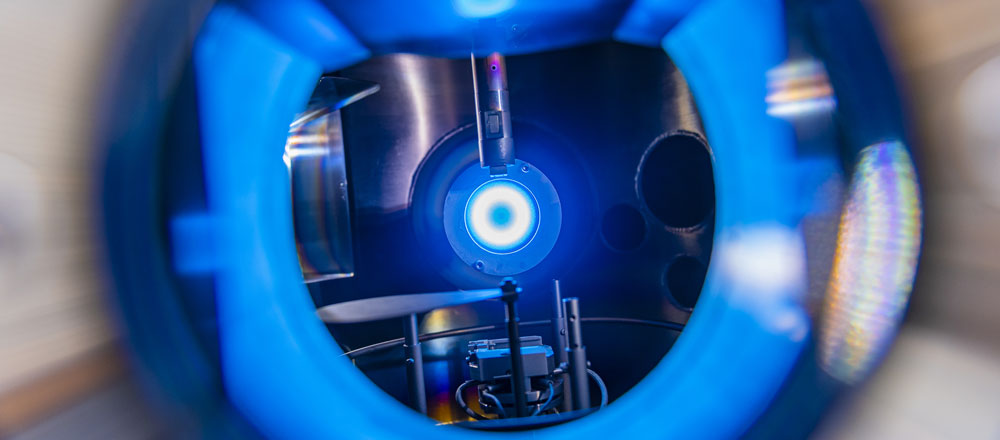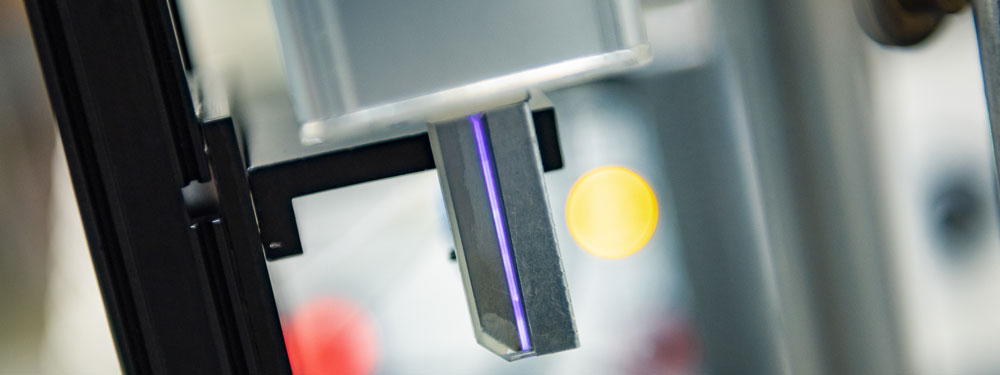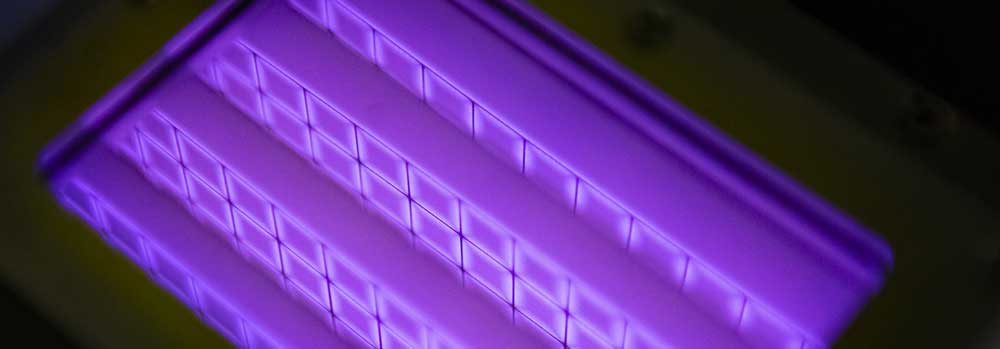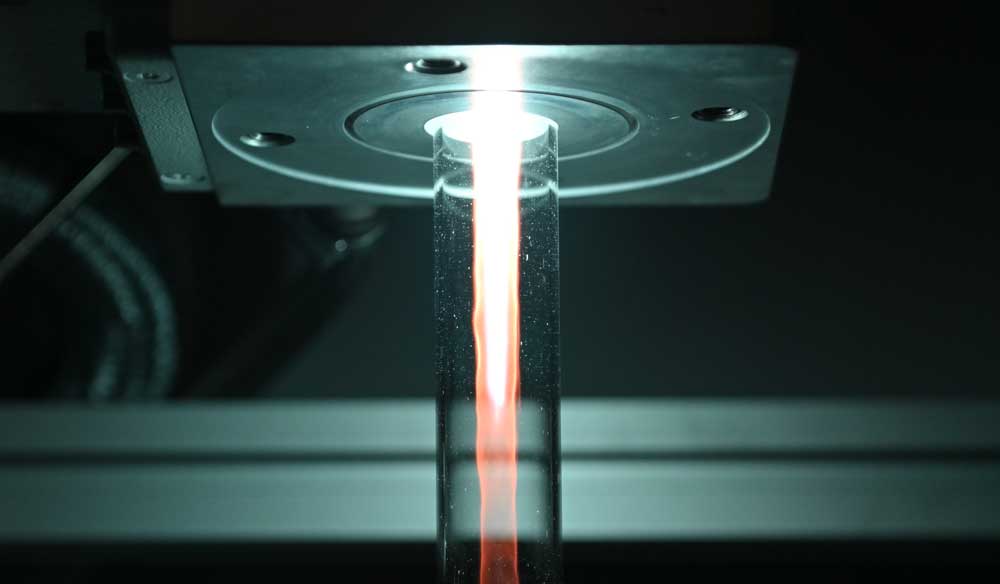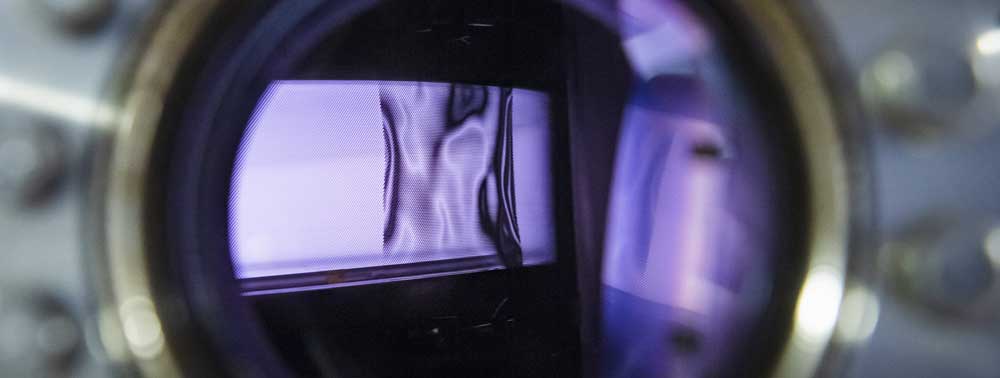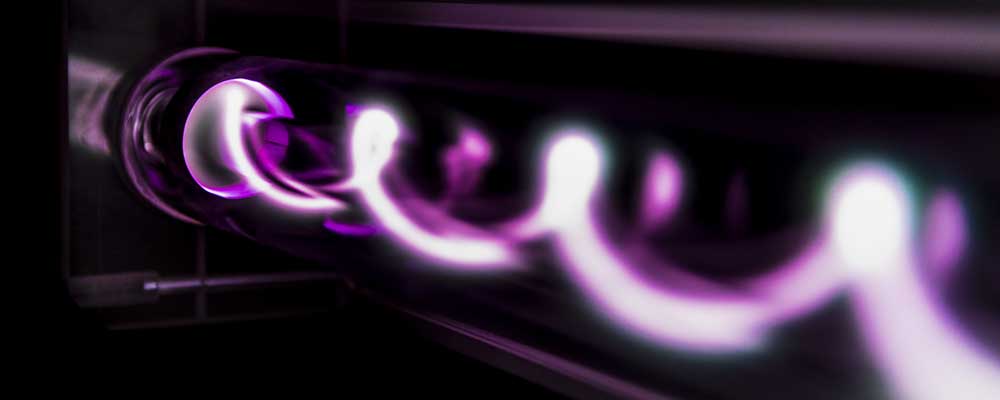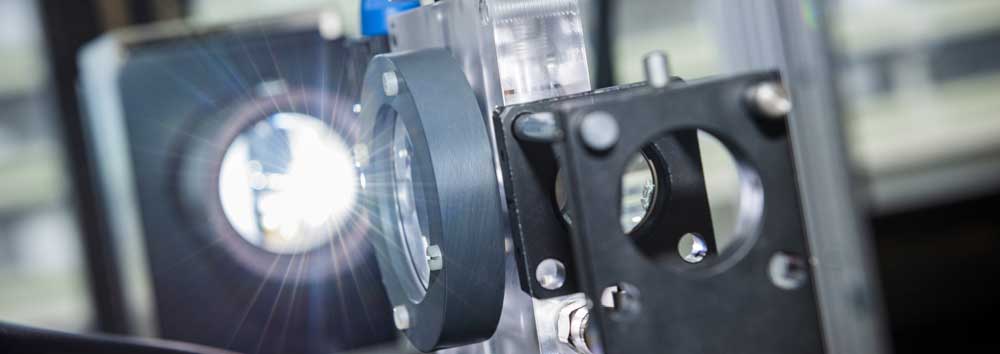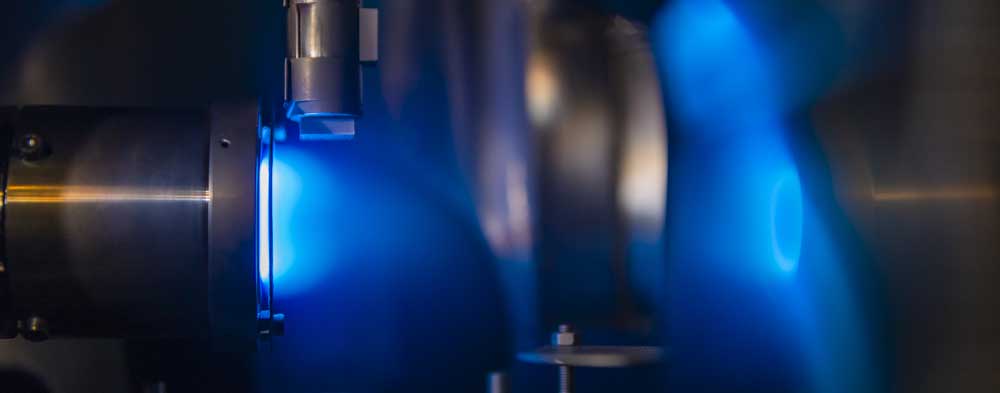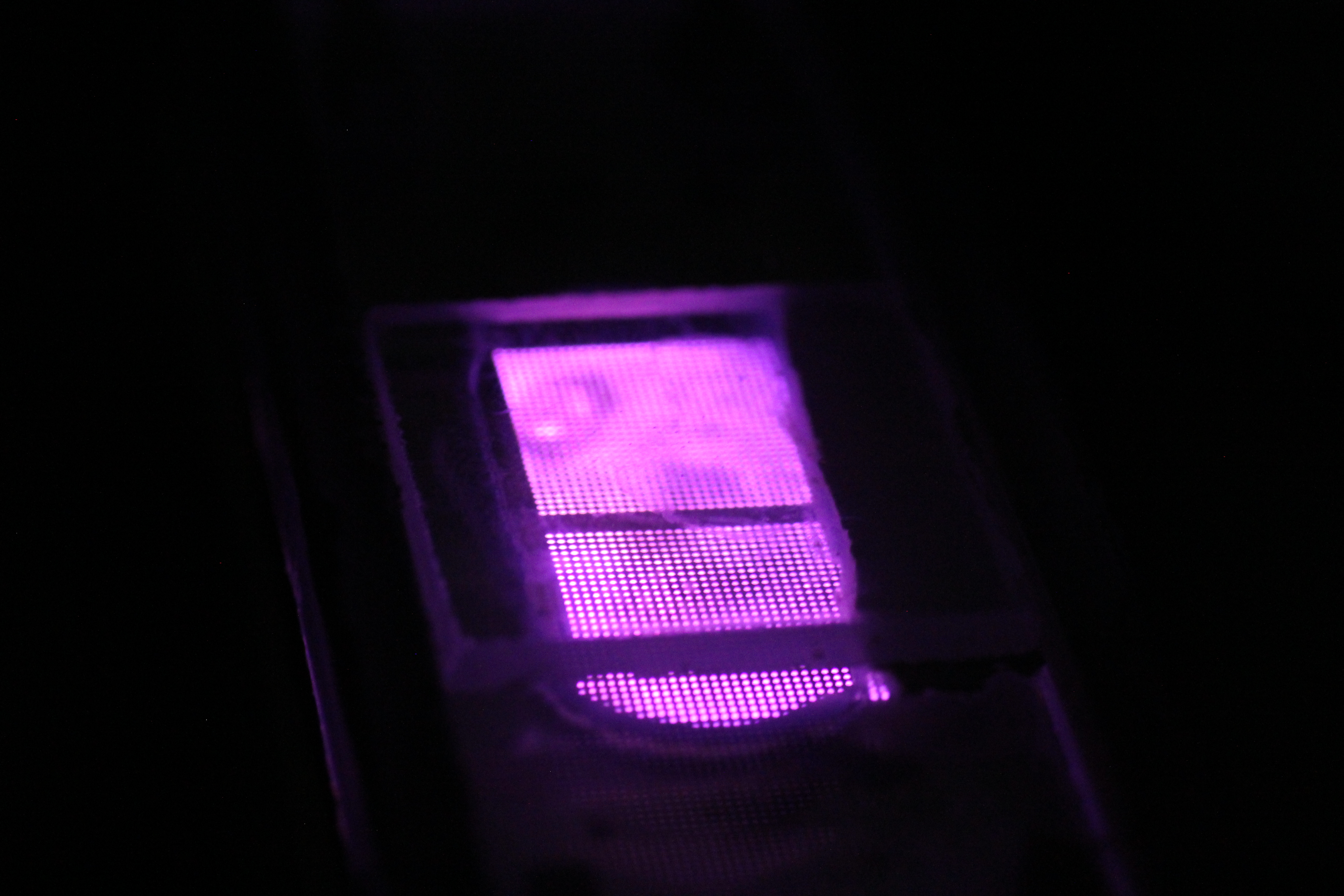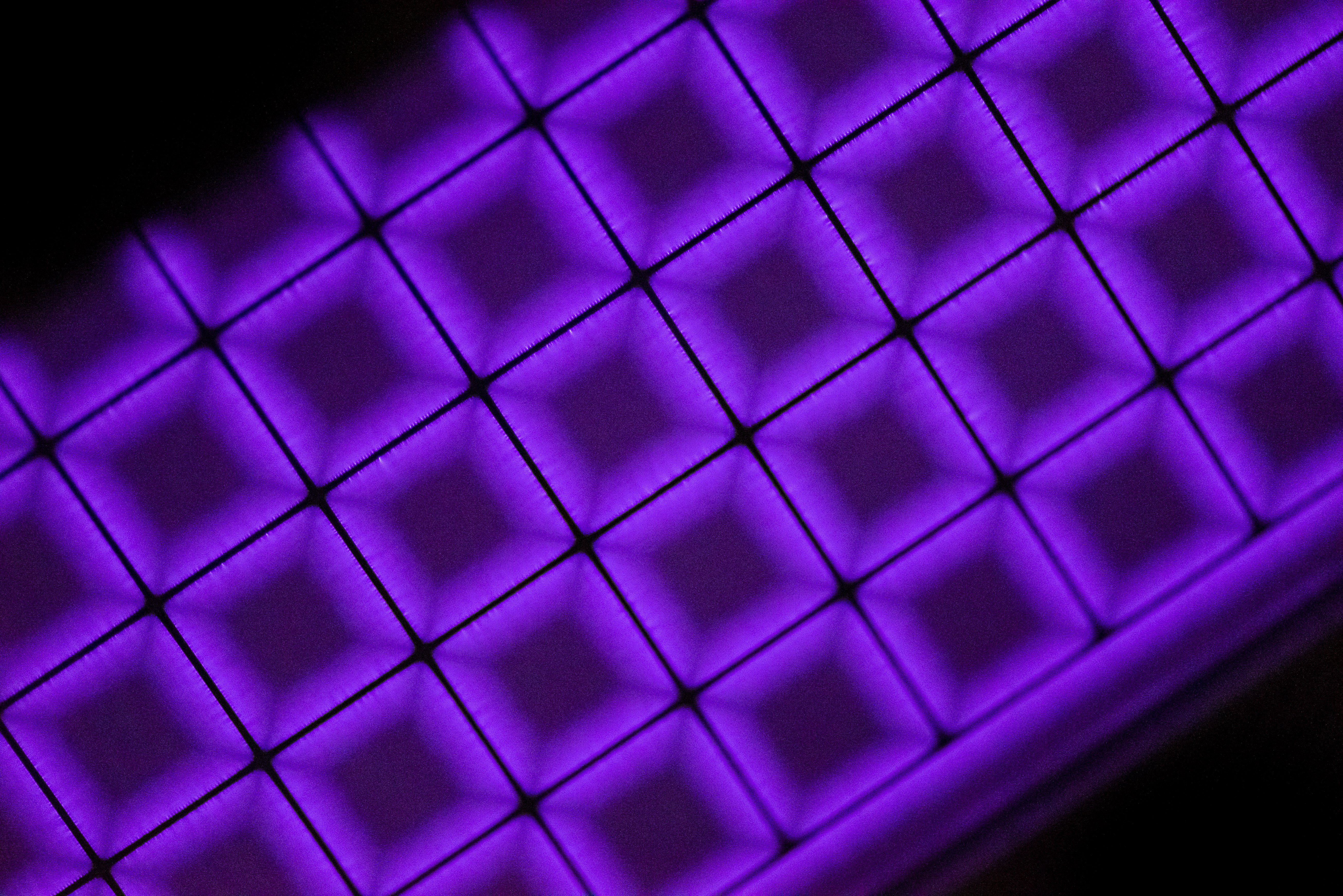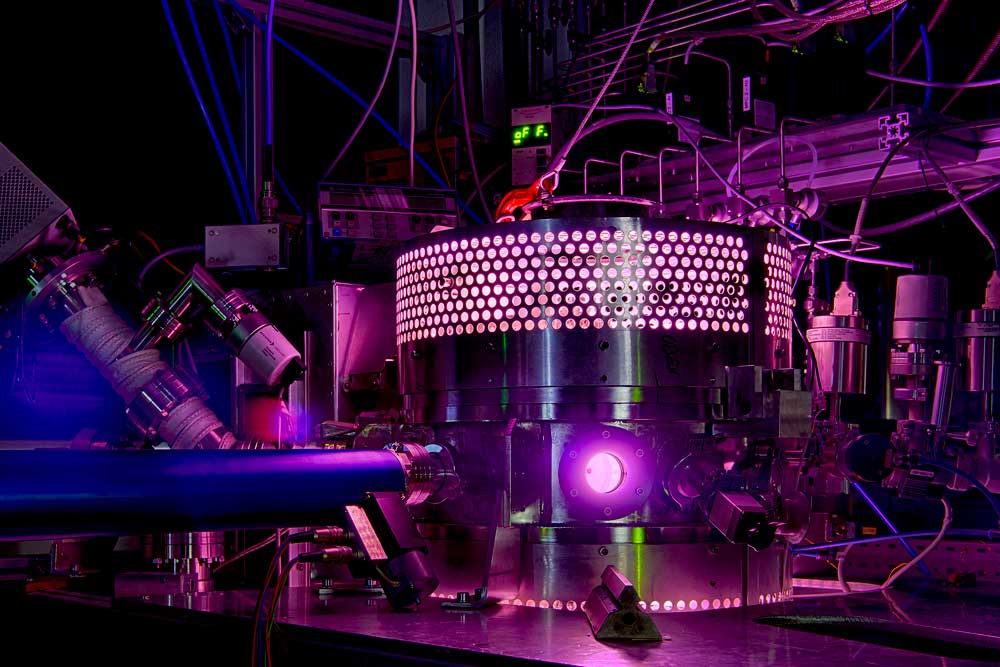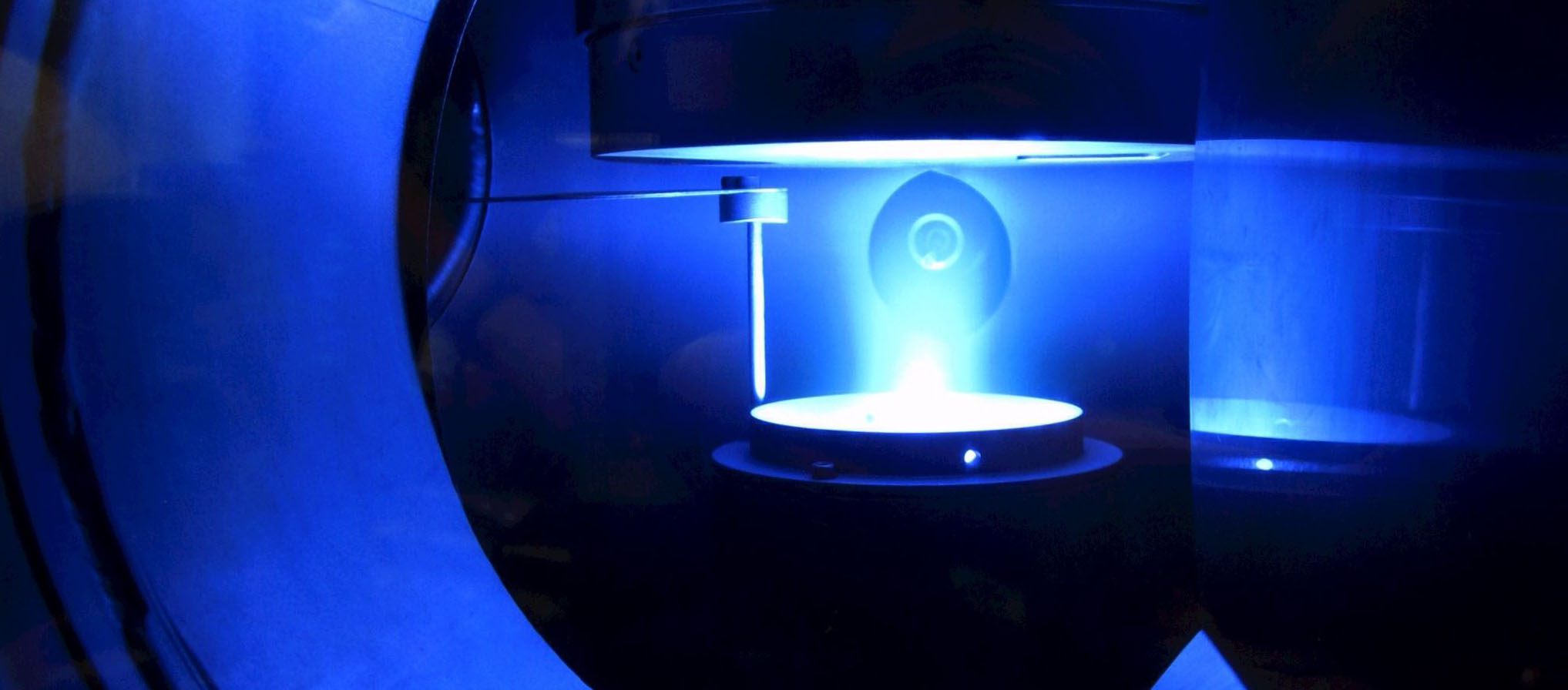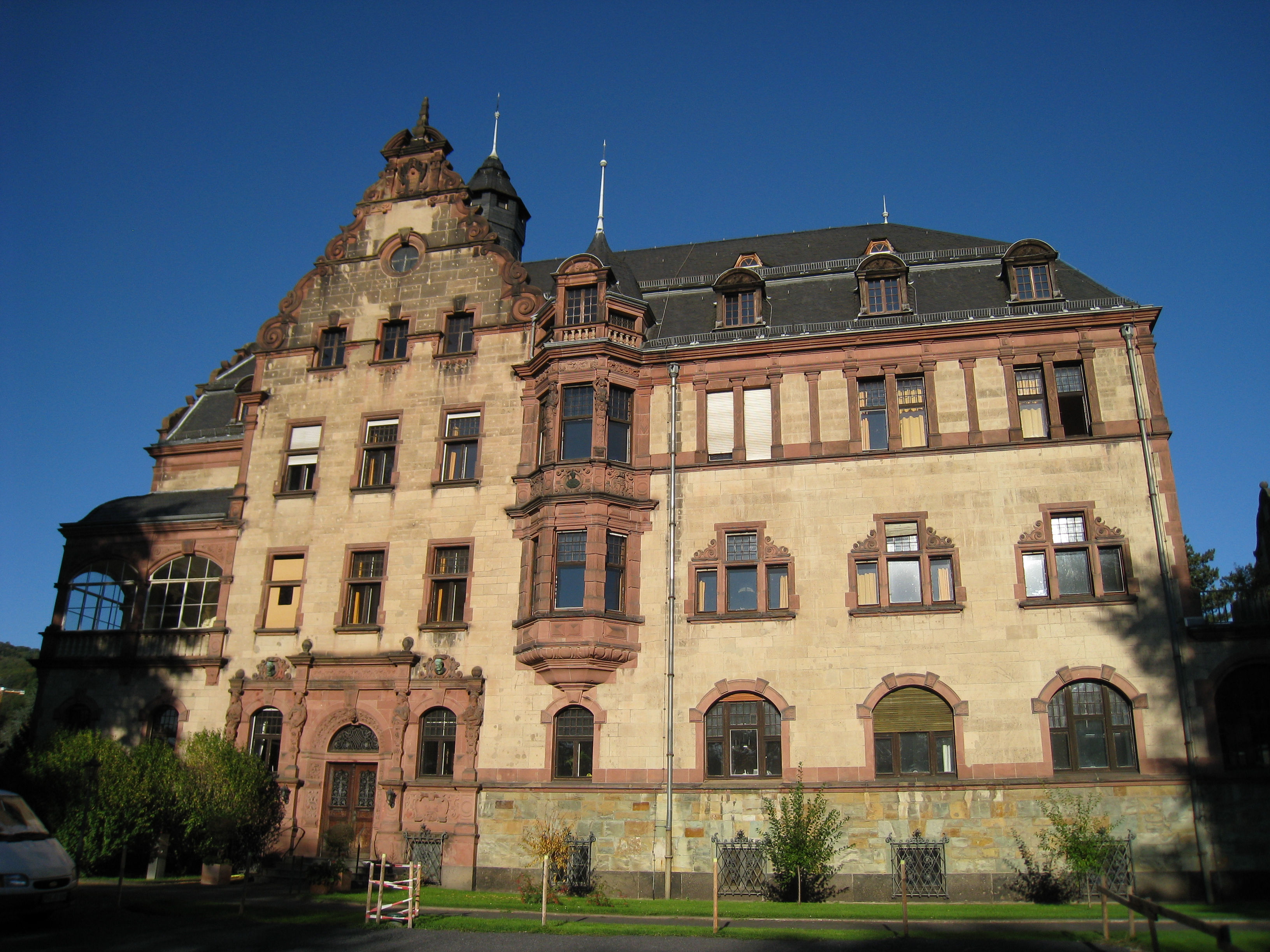- Details
“That was a fairly crazy idea”
The synthesis of many chemicals results not only in the desired product but also in its mirror image: the physico-chemical properties of the so-called enantiomers are very similar and they are therefore difficult to separate. This, however is necessary, because they often have different biological properties. This is important, for instance, when it comes to drugs. The (S)-ibuprofen isomer is effective against pain, but its twin (R)-ibuprofen is not. “Occasionally, one of the two forms is even toxic,” Professor Julia Bandow, Chair of Applied Microbiology at the RUB Faculty of Biology and Biotechnology points out.
Her research group employs enzymes, i.e. biological catalysts derived for example from bacteria or fungi to produce such chemicals. Some enzymes produce only one of the two enantiomers.
Enzymes are sensitive
However, enzymes are in general rather sensitive catalysts. Some are susceptible even to inactivation by the substrate they convert. “This is the case for our example enzyme. The unspecific peroxigenase, or UPO for short, extracted from the edible fungus Agrocybe aegerita or chestnut mushroom and synthesised by the research group of Professor Frank Hollmann from Technical University Delft can produce the fragrance (R)-1-phenylethanol. It requires hydrogen peroxide as a substrate for this purpose. If hydrogen peroxide is simply added to the enzyme-containing solution in the form of a concentrate, the enzyme is quickly inactivated,” explains Julia Bandow.
This dilemma the team resolved using several tricks. One of them was to use a plasma to produce hydrogen peroxide on demand. “That was a somewhat crazy idea,” Bandow admits in retrospect. “Because in fact, plasmas are the preferred means of destroying things.” In plasmas, which are created by adding energy to a gas, numerous reactive substances are formed, for example atomic oxygen, hydroxyl radicals, free electrons, and various excited species. Consequently, plasmas can be used to inactivate cancer cells, biofilms, viruses, or prions. In this instance, however, the plasma was supposed to help protect the biocatalysts by providing the enzyme with exactly the right dose of hydrogen peroxide needed to catalyse the fragrance at the push of a button.
“The generation of hydrogen peroxide using plasma has advantages over alternative production methods by means of enzymes or electrodes. Such enzymes are expensive to produce, they are attacked by hydrogen peroxide and hydrogen peroxide production is difficult to dose. Biocatalysts like UPO can precipitate at electrodes and clog them,” explains Julia Bandow.
Trick number two
The group therefore experimented with plasmas based on air or noble gases ignited directly above the enzyme-containing solution to produce the fragrance (R)-1-phenylethanol. However, the enzymes at the surface still were quickly destroyed by the reactive species. Here, trick number two came into play: the researchers attached the enzymes to beads, small spheres with a porous surface that lie at the bottom of the solution and hold the enzymes in place. They tested the optimal composition of the beads beforehand, because not every enzyme can dock equally well on every surface and still do its job, as this sometimes requires enzymes to move.
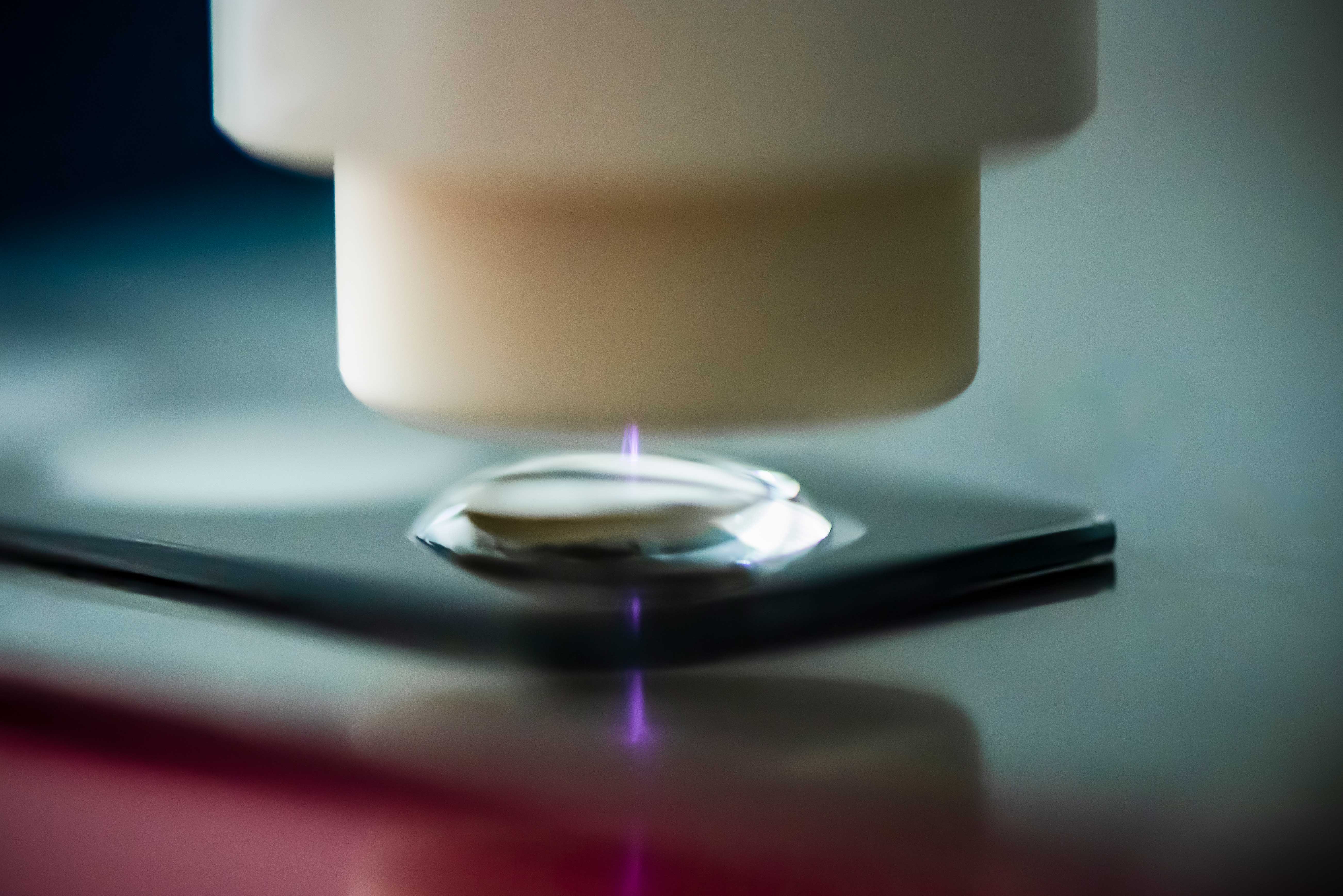
As a result, the beads sitting at the bottom of the container are covered by the solution, which acts as a buffer zone separating the enzyme from the plasma phase. The hydrogen peroxide produced by the plasma diffuses to the enzymes, where it is used in the reaction. Thanks to the buffer zone, the enzymes don’t come into contact with toxic doses of the substrate or other reactive species. Thus they remain intact and functional.
Tiny reactors
The reactors used so far are tiny. They can only hold up to five millilitres of liquid. “The protective layer that covers the beads is only about one millimetre thick,” says Julia Bandow. “This gap is sufficient to protect the enzymes from unstable and short-lived reactive substances that are created in the plasma. Some conveniently react to form hydrogen peroxide that is used as a substrate.” Hydrogen peroxide itself is comparatively long-lived. Its dose can be adjusted, for example, by pulsing the plasma, i.e. switching it on and off.
In the experiment, the enzymes were active for eight cycles of ten minutes without damage. Between cycles, the product (R)-1-phenylethanol was harvested and the second substrate, namely ethyl benzene, was replenished. The extraction of the product (R)-1-phenylethanol from the solution was carried out with ethyl acetate in just one step. “This is the great advantage of the biocatalytic over catalytic processes which produce both enantiomers,” stresses Julia Bandow.
Up to this point, the whole experiment was a proof-of-concept project, and it proved one thing: the approach works. Now, the research group is optimising the process, mainly with the aim of scaling up production volumes and optimising reactors. One reactor in which the enzyme-loaded beads rotate in the solution so that the enzymes have a steady substrate supply has already been tested successfully.

Further experiments have shown that the process works even better if the noble gas helium is used instead of air as the basis for plasma generation and if water vapour is added. “You find a lot more hydrogen peroxide in the solution, perhaps generated from plasma-generated OH radicals,” as Julia Bandow speculates. This increased the yield from about ten nanomole hydrogen peroxide per minute to 200 nanomole per minute. A further increase in hydrogen peroxide formation by 50 per cent was achieved by changing the voltage.
Our greatest success is that we have come so far in a relatively short time.
– Julia Bandow
“Our greatest success is that we have come so far in a relatively short time,” Julia Bandow points out. “The plasma reactor might open up a new class of enzymes for commercial use.”
In the search for other enzymes that can produce valuable chemicals, the researchers are pursuing several strategies. Streptomyces, a group of soil-dwelling bacteria, also have hydrogen peroxide converting enzymes. However, the characterisation of the first three candidates hasn’t yet turned up any promising manufacturers of attractive products.
Another route to new enzymes could be through compost. Tests with model substrates, whose turnover is for example indicated by a colour change, revealed promising results. “We already know at what pH and temperature such reactions take place,” says Bandow. “But we haven’t yet identified which enzymes are responsible. That is the great unknown.”
adapted from Meike Drießen (RUB)
- Details
Plasmas as chemistry labs
Even though plasmas at atmospheric pressure are often only a few cubic millimetres in size, they pack quite a punch. This is because special non-equilibrium states can be set up in them, which facilitate physical and chemical processes that are not possible in any other environment. The plasma thus becomes a special kind of laboratory, where atoms and molecules can be excited without their surroundings heating up. “Such excitations could theoretically also be generated in a gas, but to do so we would have to heat it to several thousand degrees Kelvin. As a result, the molecules would decompose,” explains Professor Uwe Czarnetzki, Head of the Chair of Plasma and Atomic Physics at the Faculty of Physics and Astronomy. For many years, he and his team have been developing methods to explore the processes inside plasmas and to characterise the plasmas.
Plasmas boast a unique feature: electric fields can be used to supply energy to the electrons in the plasma; the electrons in turn interact with molecules such as nitrogen or carbon dioxide while transferring the energy to them. The molecules are excited, and this happens without the environment heating up in the process, as would be the case in a gas. The molecules that are excited to vibrate have a much higher reactivity than those in the ground state. Plasma can therefore change chemistry or even enable certain chemical processes in the first place. Consequently, plasma provides basic researchers with a unique opportunity to study the excitation of molecules and the associated chemistry beyond thermodynamic equilibrium. Uwe Czarnetzki is therefore primarily interested in the vibrational states of molecules in plasmas.
Analysing vibrations in molecules
The individual atoms of molecules – for example, the carbon and oxygen atoms in the carbon dioxide molecule – are not rigidly bonded to each other. The bonds between the atoms periodically deform in different ways. These oscillations can take place on several energy levels, i.e. with different frequencies that can be excited by light energy. This requires the frequency of the light to correspond to the difference in frequencies between two neighbouring energy levels. It is possible to deduce the number of absorbing molecules in the light beam from the decrease in the intensity of the light at this particular frequency. The Bochum-based physicists led by Uwe Czarnetzki and Dr. Dirk Luggenhölscher in Collaborative Research Centre 1316 “Transient Atmospheric Pressure Plasmas” are using this fact to analyse the vibrational states of molecules in plasmas, specifically in collaboration with Humboldt Fellow Dr. Yanjun Du. She wants to find out how many different states occur and how often.
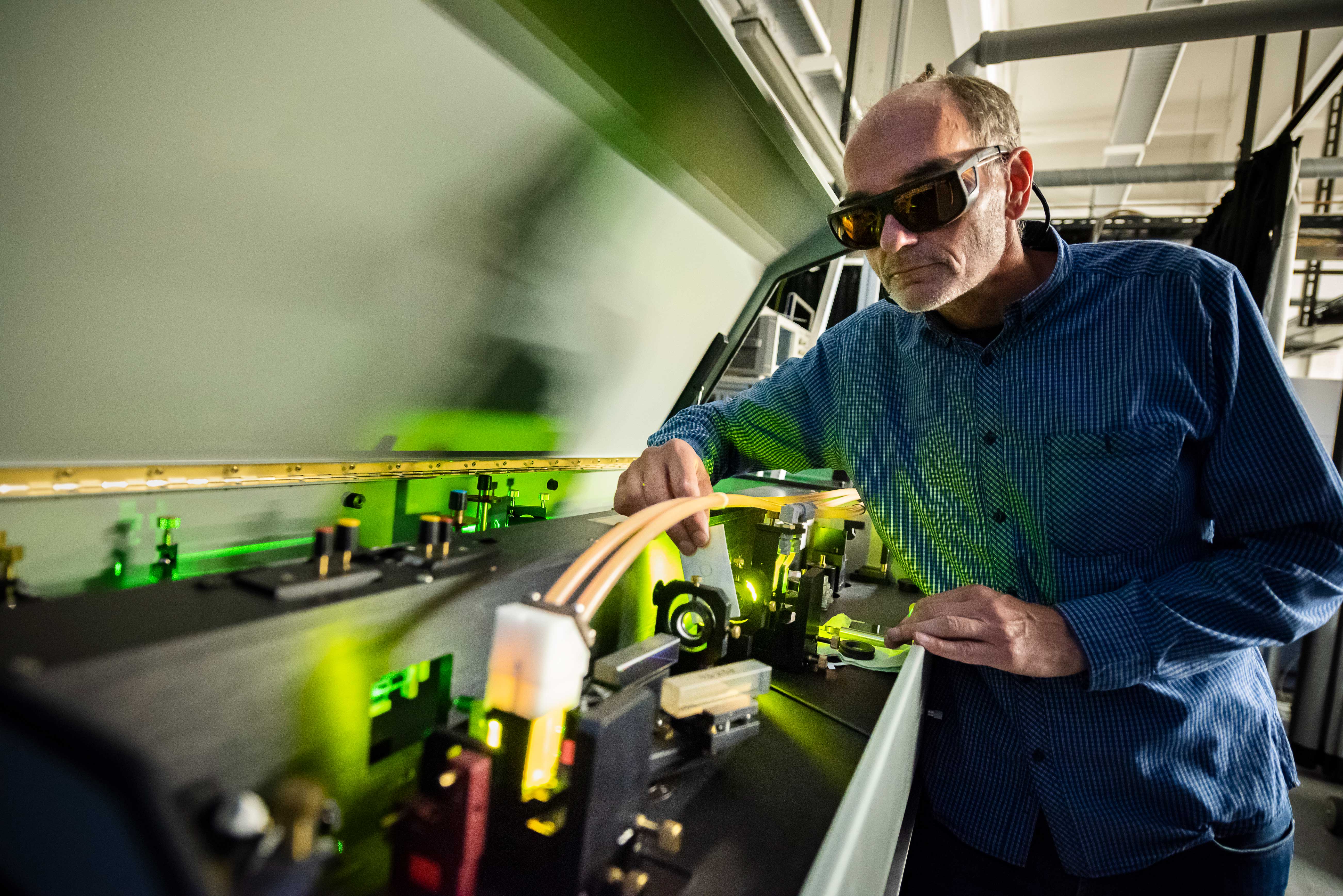
“Unfortunately, this method doesn’t work for all molecules or vibrations,” says Czarnetzki. That’s why he and his team, foremost among them Jan Kuhfeld, have refined the CARS method, short for Coherent anti-Stokes Raman Scattering. The complex laser method detects the otherwise forbidden transitions with high sensitivity, temporal and spatial resolution. In particular, the researchers revised the evaluation procedure for the theoretical calculation of the spectra so that they can also determine energy distributions that do not correspond to a thermodynamic equilibrium. “This is precisely the crucial point when using plasmas,” says Czarnetzki. The team also modified the laser system to detect all oscillation states simultaneously.
Understanding the mechanism behind excitation
The electric field is crucial to excite the oscillatory states. The crux of the matter is that a very high electric field is needed to generate the plasma, while a comparatively small field is needed for efficient vibration excitation.
Plasmas tend to do things that we don’t understand at first, but which are useful.
– Uwe Czarnetzki
At first, it was not clear why efficient oscillation excitation works despite this supposed contradiction. “Plasmas tend to do things that we don’t understand at first, but which are useful,” points out Czarnetzki. “Then, once we understand the mechanism, it turns out to be very mundane in retrospect.” Thanks to a new laser technique developed in Bochum by Dr. Nikita Lepikhin and his colleagues to measure the electric fields, the researchers finally understood what exactly happens when the plasma is created and the oscillations are excited.
First of all, one has to bear in mind how a plasma is created: To begin with, there is a gas to which energy is added in the form of electric current, until finally a high-energy state emerges in which a certain proportion of the gas is ionised. However, not all charges are generated at once. Initially, only some particles of the gas are ionised and accelerated, which in turn produces new charges. “In a few nanoseconds, an avalanche of charges forms and a high-density plasma is created,” outlines Uwe Czarnetzki. It is not possible to maintain such a high-energy state permanently, so the plasmas are operated in pulsed mode, i.e. switched on and off again and again, so to speak, typically a few thousand times per second.
Pulsed plasma solves supposed contradiction
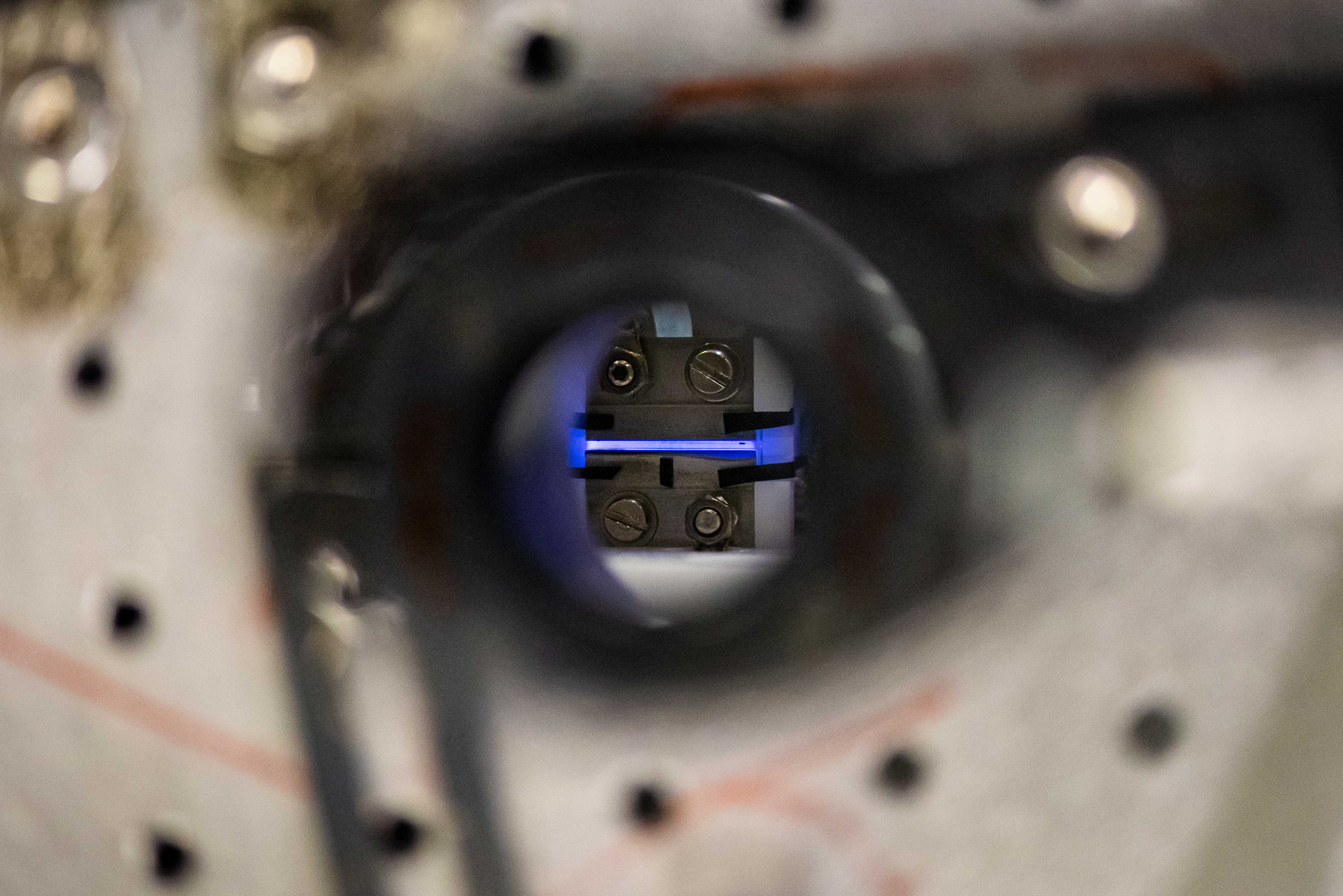
Due to the extremely fast pulsing of the discharge, the plasma solves the supposed problem of the different optimal electric field for plasma generation and oscillation excitation all by itself, so to speak. In the first nanoseconds after applying the voltage, there is a low plasma density, resulting in a high electrical resistance and thus a high field. Following strong ionisation, an exceptionally high plasma density is eventually achieved. This reduces the resistance and thus also the field. In the subsequent phase, the field is small and ideal for the excitation of oscillations. In addition, the charges discharged by the current flow are suitably replenished in a very thin transition region between the plasma and the electrode. By far the largest part of the high-density plasma, however, doesn’t generate any new charges, but only acts as a current conductor. Here, the electrons are gently accelerated in a weak field and give up almost all of the energy thus absorbed to the vibrational excitation of the molecules.
This already works well enough, at least in nitrogen molecules. In future, the physicists also intend to use this method to study CO2molecules. Initial measurements and theoretical considerations give them cause for optimism.
Combining different measuring methods
In the meantime, Czarnetzki’s team has also succeeded in combining the method for measuring the vibrational states with the method for measuring the electric fields in plasmas – a challenging task. “The smaller a plasma, the bigger the experimental setup required to study it,” points out Uwe Czarnetzki. “Our plasmas are so small that we don’t have room to insert a thick filament into them.”
It can be enough if a cable is laid incorrectly to get interference in the system.
– Uwe Czarnetzki
Laser technology solves this problem, but it requires complex experimental setups. Therefore, the experimental setups for measuring the electric fields and the vibrational states couldn’t simply be coupled. Instead, the physicists created two identical plasmas with great effort and attention to detail, on which they can run the measurements simultaneously and then pool the data. Each little detail made a difference. “It can be enough if a cable is laid incorrectly to get interference in the system,” says Uwe Czarnetzki. The fact that it was possible to obtain a coherent picture of the processes in the plasma for the first time by combining the two sensitive measurement methods is therefore one of the highlights of his research.
adapted from Julia Weiler (RUB)
- Details
Plasma research contributes to new Research Center “Future Energy Materials and Systems”
The state NRW will fund four research centers and one research college during the next years in the framework of the funding instrument "Ruhr Konferenz". One research center “Future energy materials and systems” will support the plasma science at RUB in the area of synthetic plasma chemistry. (Image (c) hagenvontroja)

- Details
Plasma Taster Day What is plasma and where is it used in technology & research?
Interested high school students are invited to participate in the Taster Day Plasma on 28.01.2020 from 10 am to 3 pm online. The chairs of the Ruhr-Universität Bochum introduce themselves.
Technical plasmas are used in many areas of everyday life and enable many achievements of our engineered world, such as in microelectronics, optics or mechanical engineering. But also in areas like air purification, sterilization and medicine plasmas can be used effectively in innovative concepts.
The fundamentals of technical applications are our field of research. We work interdisciplinary with partners from research and industry to develop innovative concepts and systems. And we would like to explain to you the largely unknown concept of physical plasmas and introduce you to how we use and research the "fourth state of matter". Furthermore, we would like to show you how you might become part of a research team in the future!
Please register by email to:
- Details
Plasma Trial Day - What is plasma and where does it find application in technology & research?
Interested high school students are invited to participate in the Plasma Trial Day on Jan. 28, 2020 from 10 a.m. to 3 p.m. online. The chairs of the Ruhr-Universität Bochum will introduce themselves.
Technical plasmas find their application in many areas of everyday life and enable many achievements of our engineered world, such as in microelectronics, optics or mechanical engineering. But also in areas like air purification, sterilization and medicine plasmas can be used effectively in innovative concepts.
The fundamentals of technical applications are our field of research. We work interdisciplinary with partners from research and industry to develop innovative concepts and systems. And we would like to explain to you the largely unknown concept of physical plasma and introduce you to how we use and research the "fourth state of matter". Furthermore, we would like to show you how you might become part of a research team in the future!
Please register by email to:
- Details
General assembly 2020
All members of the RDPCI are cordially invited to attend this year's full meeting of the Reserch Department Plasmas with Complex Interactions. It will be held on Dec. 03, 2021 at 10 a.m. via zoom.
- Details
7th International Plasma Science & Entrepreneurship Workshop
On November 2 & 3, 2020, the 7th International Plasma Science & Entrepreneurship Workshop took place in an online format of the Ruhr-Universität Bochum. The event was organized by Hugo de Haan (programme, Vision Dynamics), Guus Peemen (chair, TuE), and Achim von Keudell (host and chair, RUB).
- Plasma medicine, medical and healthcare
- Plasma Surface modification & thin films
- Atmospheric pressure plasma @ Micro/Nano scale
- Atmospheric pressure plasma jet (APPJ)
- Nanoparticles generation and particlesurface treatment
- Surface diagnostics, energetics, analytics and –metrology
- Plasma parameterization, diagnostics, simulation
- Plasma for Emission Abatement & CO2 Plasma parameterization, diagnostics, simulation
The workshop is a PhD (student) expert-level workshop focused on the achievements, challenges and opportunities for the scientific- and entrepreneurial community working in the field.
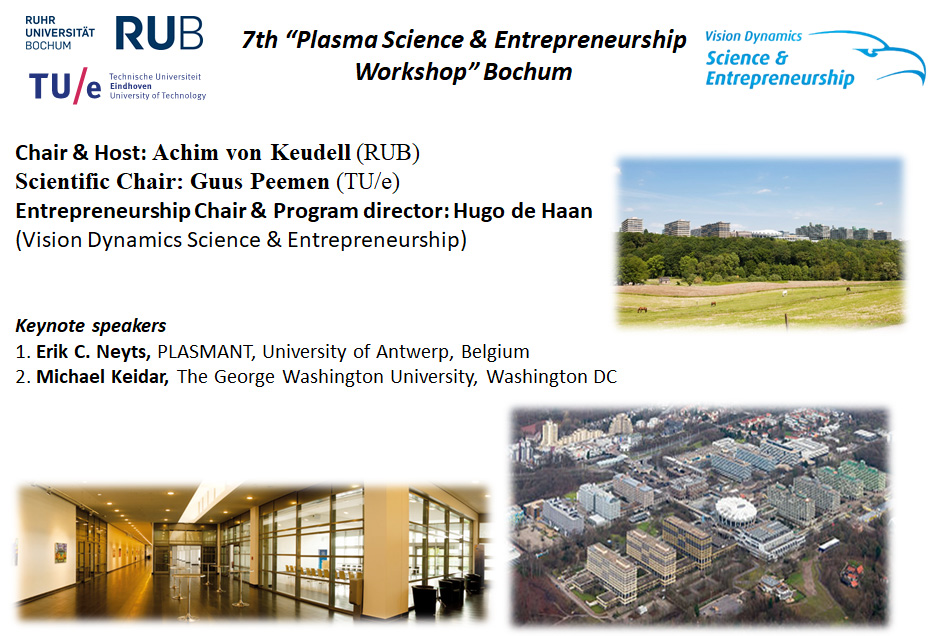
- Details
Successful Plasma Summer School in 2020 in an online format
Due to the current situation, this year's summer school did not take place at the usual location of the physics center in Bad Honnef, but online. The regular programme consisting of basic plasma physics lectures combined with a master class on special topics could not take place as usual. Nevertheless, all teachers have agreed to deliver their basic lectures via an online video format. The summer school was extended to two weeks with two lectures per day. This year more people were able to tune in, because the online format is much easier to reach from regions with limited travel possibilities.
The lectures were technically flawless and the feedback from students and teachers was very positive. Many discussions and interactions could be made possible due to the high commitment of all teachers. Two practical workshops were also held by L. L. Alves on solving the Boltzmann equation and by N. Braithwaite on analyzing the Paschen curve.
We hope for another summer school in 2021, then again in the facilities of the physics center in Bad Honnef. The latest information on the planning for 2021 will be published at the summer school homepage in March 2021.
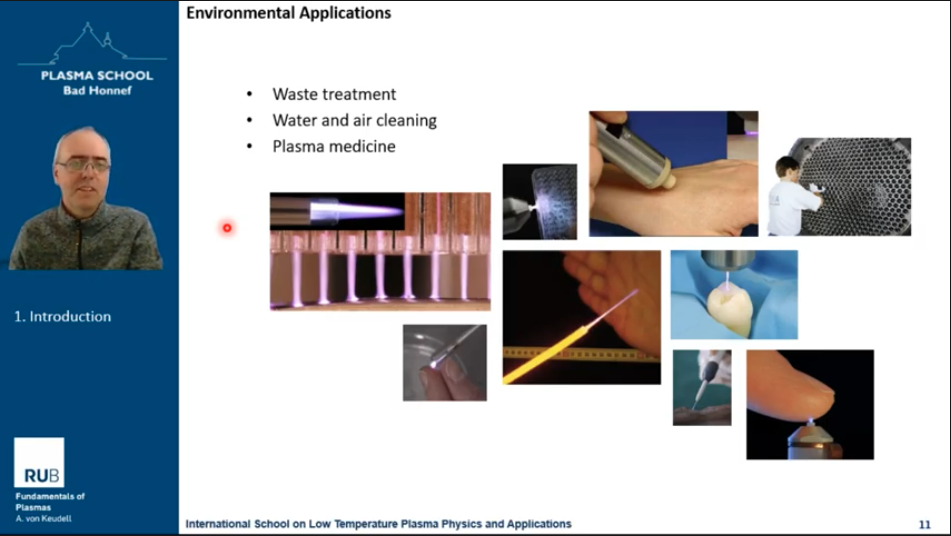
- Details
Online Plasma Summer School in 2020
Although the situation regarding the Covid 19 pandemic is affecting our day-to-day business at the moment, we are trying to plan the upcoming International Low Temperature Plasma Physics School for October 2020. Therefore, the 24th International Plasma School on "Low Temperature Plasma Physics: Fundamentals and Applications" (October 3-8, 2020) will be an online course over two weeks (October 5-16, 2020). Unfortunately, the Master Class "Spectroscopy" for 2020 has to be cancelled. However, this master class will have been held during the next school in 2021.
- Details
Lukas Mai and colleagues on new chemistry for ultra-thin gas sensors
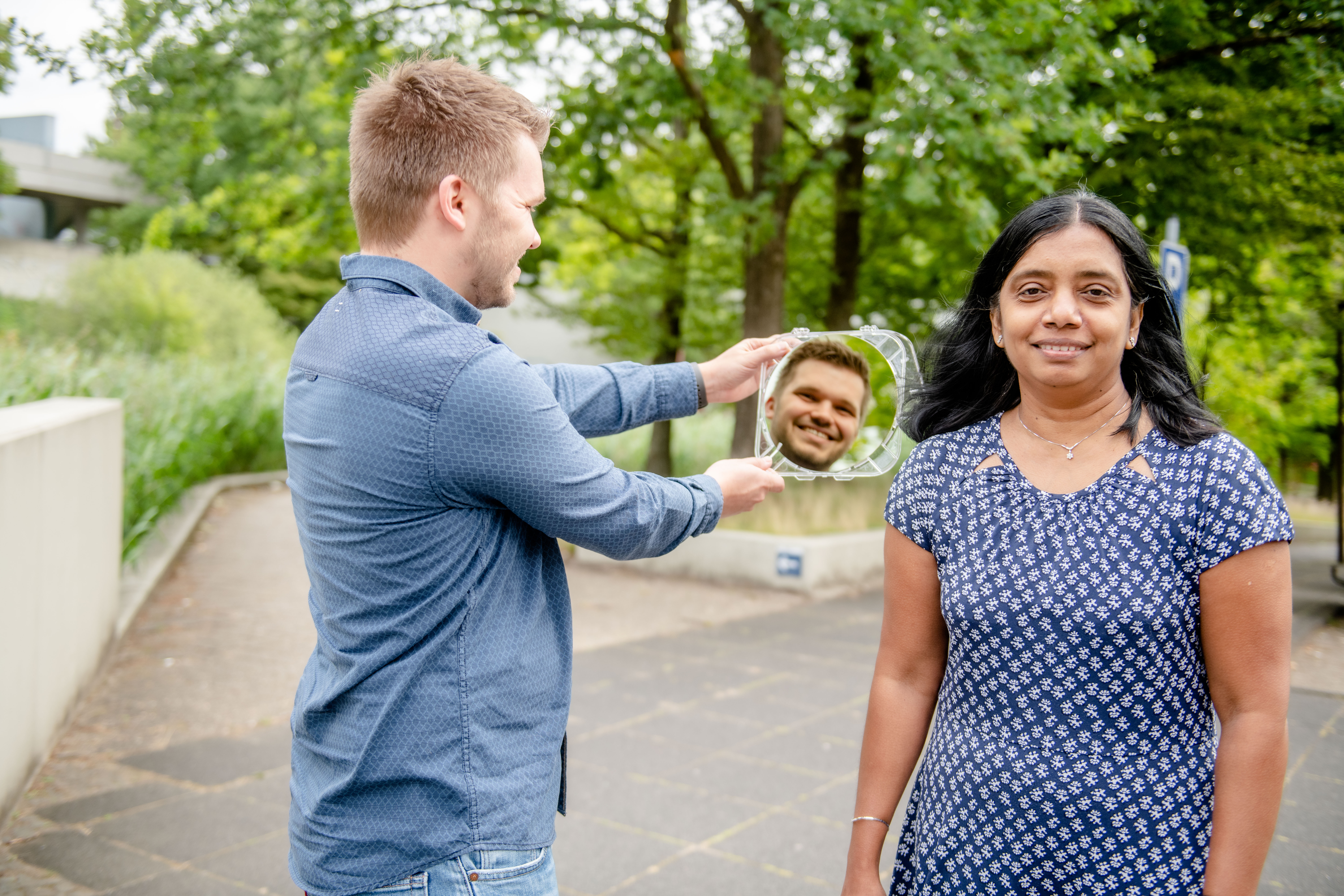 A Bochum team has developed a new process for zinc oxide coatings that can be used in nitrogen oxide sensors and as protective coatings on plastics.
A Bochum team has developed a new process for zinc oxide coatings that can be used in nitrogen oxide sensors and as protective coatings on plastics.
The application of zinc oxide coatings in industry is manifold and ranges from the protection of perishable goods from air to the detection of toxic nitrogen oxides. Such layers can be produced by means of atomic layer deposition (ALD), which normally uses precursor chemicals, so-called precursors, which ignite immediately in air. An interdisciplinary research team at the Ruhr-Universität Bochum (RUB) has now established a new production process based on non-self-igniting precursors that takes place at such low temperatures that plastics can also be coated. The team reported in the magazine "Small", which selected the article for its title in the issue of 4 June 2020.
Applying ultra-thin coatings
To produce a sensor for nitrogen dioxide (NO2), a thin layer of nanostructured zinc oxide (ZnO) must be applied to a sensor substrate and then integrated into an electrical component. Prof. Dr. Anjana Devi's team used ALD to apply ultra-thin ZnO layers to such sensor substrates.
In general, ALD processes are used in industry to miniaturize electrical components by means of ultra-thin layers, some of which are only a few atomic layers thick, while at the same time increasing the efficiency. This requires precursors that react on a surface in the ALD process to form a thin layer. "The chemistry behind ALD processes is therefore essential and has a great influence on the resulting layers," emphasizes Anjana Devi.
Safe handling and highest quality
In industry, ZnO coatings have so far been produced with an extremely reactive zinc precursor that ignites immediately in air, experts call it pyrophoric. "The key to developing a safe ALD process was to research a new, non-pyrophoric precursor that can be handled safely and is capable of producing ZnO coatings of the highest quality," said Lukas Mai, lead author of the study. "The challenge was to find an alternative chemistry capable of replacing pyrophoric, industrially used compounds".
The special feature of the new process is that it is even possible at low temperatures, which makes it possible to coat plastics. Thus, the new process is not only suitable for the production of gas sensors, but also for gas barrier layers. These are applied to plastic in industry and are used to protect sensitive goods such as food and medicines from air.
This was made possible by the interdisciplinary cooperation of natural scientists and engineers. The team included the working groups Chemistry of Inorganic Materials headed by Anjana Devi and General Electrical Engineering and Plasma Technology headed by Prof. Dr. Peter Awakowicz, researchers from Heinrich Heine University Düsseldorf and the company Paragon.
The work was funded by the European Fund for Regional Development (EFRE) in the Funald project and by the German Research Foundation in the framework of the Collaborative Research Centre/Transregional TR87. Lukas Mai was supported by the Stiftung der Deutschen Wirtschaft.
adapted from Meike Drießen, RUB
- Details
International School on Low Temperature Plasma Physics 2020
Due to the situation with Covid-19, the Plasma School will be an online course lasting over two weeks (October 5th until October 16th, 2020). Unfortunately, the Master Class “Spectroscopy” has to be cancelled for 2020. However, this Master Class will take place during the next school in 2021.
Since all teachers of the school confirmed their participation also in an online format, we changed the schedule, so that the intensity of the courses will be comfortable for the participants. Some of the courses will be online in advance, so that you can decide when to watch the videos. Other teachers prefer to do their courses live, so there will be a defined time slot to watch the lectures. However, all teacher of the corresponding day will be available online for Q & A discussions in the afternoon. The school will be free of charge for all participants.
In order to guarantee an optimal interaction between teachers and students, we limit the access to the school. Therefore, a registration on the school webpage is necessary with an appropriate motivation text. Please, register until July 15th if you would like to attend the online format of the school. After this date, the organization team will decide about the participants. All previously registered students will of course also be considered for the school's online format.
- For more information, see Homepage Summer School
